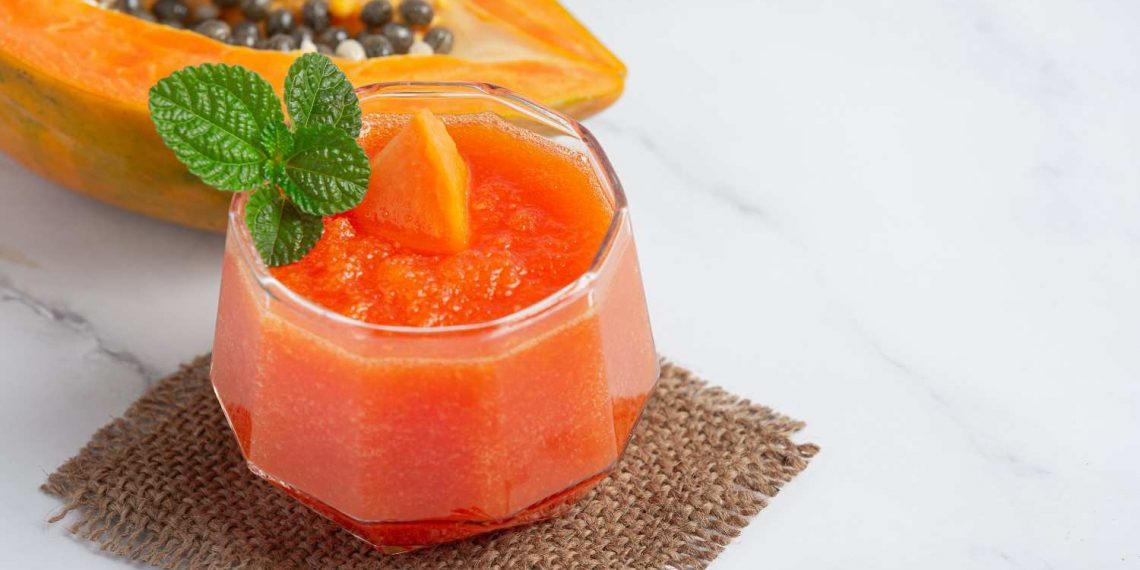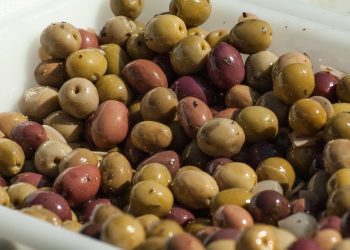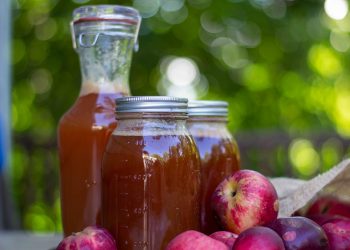Did you know that papaya, often hailed as a tropical delight, could also be a secret weapon against joint pain? Yep, it’s true! This vibrant fruit is not just a pretty face; it’s packed with nutrients and enzymes that may help reduce inflammation and ease discomfort in your joints. If you’re like me, always on the lookout for tasty ways to support your health, you’ll want to dive into these five delicious papaya recipes designed with joint pain relief in mind. Let’s get cooking!
Contents
Why Papaya?
Before we jump into the recipes, let’s talk a bit about why papaya is worth incorporating into your meals, especially if you’re dealing with joint pain. Papaya contains an enzyme called papain, which has anti-inflammatory properties. It also boasts a wealth of vitamins A, C, and E—antioxidants that can help combat oxidative stress in the body. Plus, papaya is rich in fiber, which supports digestion and can contribute to overall health.
Research from the National Institutes of Health suggests that dietary antioxidants can play a role in reducing inflammation, making papaya a solid choice for those seeking relief (NIH, 2014). So, let’s see how we can harness this fruity powerhouse in our kitchens!
1. Papaya and Turmeric Smoothie
Ingredients:
- 1 cup ripe papaya chunks
- 1 banana
- 1 teaspoon turmeric powder
- 1 tablespoon honey (optional)
- 1 cup almond milk (or any milk of your choice)
- Ice cubes (optional)
Instructions:
- Toss the papaya, banana, turmeric, and honey into a blender.
- Pour in the almond milk and add ice if you prefer a chilled smoothie.
- Blend until smooth and creamy.
- Pour into a glass and enjoy!
Why It Works:
Turmeric is renowned for its anti-inflammatory properties, thanks to its active compound, curcumin. When paired with papaya, this smoothie not only tastes great but also packs a powerful punch against inflammation.
Pros & Cons:
- Pros: Quick to make, refreshing, and packed with nutrients.
- Cons: Some people may find turmeric’s earthy flavor too strong.
2. Papaya Salad with Lime and Chili
Ingredients:
- 2 cups shredded green papaya
- 1 carrot, grated
- 1/2 red bell pepper, thinly sliced
- 1 tablespoon lime juice
- 1 teaspoon chili flakes (adjust to taste)
- Fresh cilantro for garnish
- Salt to taste
Instructions:
- In a large bowl, combine the shredded papaya, grated carrot, and red bell pepper.
- Drizzle with lime juice and sprinkle chili flakes and salt over the top.
- Toss everything together until well mixed.
- Garnish with fresh cilantro and serve immediately.
Why It Works:
This salad is not only refreshing but also rich in vitamins and antioxidants. The lime juice adds a zesty flavor while helping to enhance the absorption of nutrients.
Pros & Cons:
- Pros: Light, crunchy, and full of flavor; great as a side dish.
- Cons: Requires some prep work to shred the papaya and carrot.
3. Papaya and Ginger Stir-Fry
Ingredients:
- 1 cup ripe papaya, diced
- 1 cup mixed vegetables (bell peppers, broccoli, snap peas)
- 1 tablespoon fresh ginger, minced
- 2 tablespoons soy sauce or tamari
- 1 tablespoon sesame oil
- Cooked quinoa or rice (optional)
Instructions:
- Heat sesame oil in a pan over medium heat.
- Add minced ginger and sauté for about 30 seconds until fragrant.
- Toss in the mixed vegetables and stir-fry for 3–4 minutes.
- Add the diced papaya and soy sauce, cooking for another 2 minutes.
- Serve over quinoa or rice if desired.
Why It Works:
Ginger is another anti-inflammatory hero. Combined with the sweetness of papaya and the crunch of vegetables, this dish is both nutritious and satisfying.
Pros & Cons:
- Pros: Quick to prepare and very versatile; you can use any veggies you like.
- Cons: May not be as filling without the quinoa or rice.
4. Papaya Chia Seed Pudding
Ingredients:
- 1 cup almond milk (or your choice of milk)
- 1/4 cup chia seeds
- 1/2 cup ripe papaya, pureed
- 1 tablespoon maple syrup (optional)
- Fresh fruit for topping (optional)
Instructions:
- In a bowl, combine almond milk, chia seeds, and maple syrup. Stir well.
- Let the mixture sit for about 10 minutes, then stir again to prevent clumping.
- Fold in the pureed papaya and refrigerate for at least 2 hours (or overnight).
- Serve chilled, topped with fresh fruit.
Why It Works:
Chia seeds are high in omega-3 fatty acids, which can help fight inflammation. The creamy texture of the pudding makes it a delightful treat.
Pros & Cons:
- Pros: A great make-ahead breakfast or snack option; rich in fiber.
- Cons: Requires chilling time, so it’s not an instant fix.
5. Papaya Salsa
Ingredients:
- 1 cup diced papaya
- 1/2 cup diced red onion
- 1 jalapeño, seeded and minced
- 1/4 cup chopped fresh cilantro
- Juice of 1 lime
- Salt to taste
Instructions:
- In a bowl, combine diced papaya, red onion, jalapeño, and cilantro.
- Squeeze lime juice over the mixture and season with salt.
- Toss gently to combine and let sit for about 10 minutes to meld flavors.
Why It Works:
This fresh salsa can be served with grilled fish or chicken, adding a tropical twist to your meal. The ingredients are all anti-inflammatory, making it a guilt-free addition to your diet.
Pros & Cons:
- Pros: Versatile and flavorful; pairs well with a variety of dishes.
- Cons: Can be a bit spicy depending on the amount of jalapeño used.
FAQs
1. Can papaya really help with joint pain?
While there’s no definitive cure for joint pain, papaya contains anti-inflammatory properties that may help alleviate some symptoms. Always consult a healthcare professional for personalized advice.
2. How often should I eat papaya for it to be effective?
Incorporating papaya into your diet a few times a week as part of a balanced diet may provide benefits. Variety is key!
3. Are there any side effects of eating papaya?
Generally, papaya is safe for most people. However, some may experience digestive issues or allergic reactions. It’s always best to start with small amounts.
4. Can I use frozen papaya for these recipes?
Absolutely! Frozen papaya can be a convenient alternative, especially for smoothies and puddings.
Conclusion
Incorporating papaya into your diet can be a delicious way to support joint health. Whether you blend it into smoothies, toss it in salads, or enjoy it as a refreshing salsa, this tropical fruit offers a variety of options that are both tasty and nutritious. Remember, while these recipes can support your health, they’re not a substitute for professional medical advice. Always consult a healthcare provider for personalized recommendations.
So, what are you waiting for? Grab a ripe papaya and get cooking! Your joints will thank you.
Disclaimer: This article is for educational purposes only and is not a substitute for professional medical advice. Always consult a qualified healthcare provider before making changes to your health routine.
References
- National Institutes of Health. (2014). “Dietary Antioxidants and Inflammation.” Retrieved from https://www.ncbi.nlm.nih.gov/pmc/articles/PMC4016510/
- Mayo Clinic. (2022). “Papaya: Health Benefits and Nutritional Information.” Retrieved from https://www.mayoclinic.org/healthy-lifestyle/nutrition-and-healthy-eating/in-depth/papaya/art-20045692
- Harvard Health Publishing. (2019). “The anti-inflammatory diet.” Retrieved from https://www.health.harvard.edu/diet-and-weight-loss/the-anti-inflammatory-diet
Get Your FREE Natural Health Guide!
Subscribe now and receive our exclusive ebook packed with natural health tips, practical wellness advice, and easy lifestyle changes — delivered straight to your inbox.














